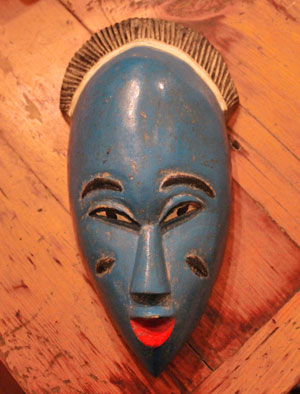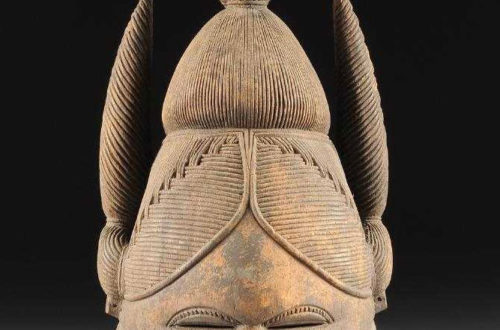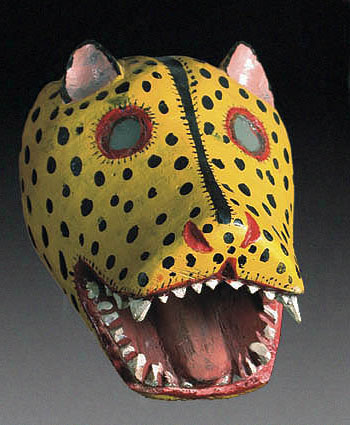 The False Face Society is probably the best known of the medicinal societies among the Iroquois, especially for its dramatic wooden masks. The design of the masks is somewhat variable, but most share certain features.
The False Face Society is probably the best known of the medicinal societies among the Iroquois, especially for its dramatic wooden masks. The design of the masks is somewhat variable, but most share certain features.
The eyes are deep-set and accented by metal. The noses are bent and crooked. The other facial features are variable. The masks are painted red and black. Most often they have pouches of tobacco tied onto the hair above their foreheads. Basswood is usually used for the masks although other types of wood are sometimes used. Horse tail hair is used for the hair, which can be black, reddish brown, brown, grey or white.
The masks are carved directly on the tree and only removed when completed. Masks are painted red if they were begun in the morning or black if they were begun in the afternoon. Because the trees are alive, they are considered to be living and breathing. They are served parched corn mush and given small pouches of tobacco as payment for services.
In modern times, the masks have been a contentious subject among the Iroquois. Some Iroquois who are not members of the False Face Society have produced and sold the masks to non-Native tourists and collectors. The Iroquois leadership responded to the commercialization of this tradition and released a statement against the sale of these sacred masks. They also called for the return of the masks from collectors and museums. Iroquois traditionalists object to labeling the masks as simply “artifacts” since they are not conceived as objects but the living representation of a spirit.
This is from Wikipedia. I have edited it considerably. The previous blog was also about a Native American (Hopi) mask. In both cases there are serious objections to the sale of authentic items to collectors and museums. What is your opinion?





